Homemade Stir-fried Springy Rice Cake
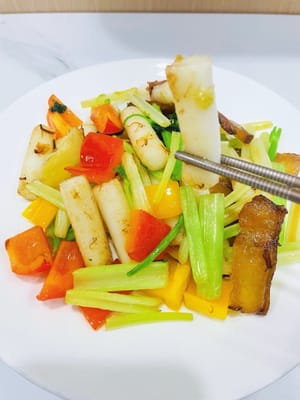
Rice cakes are a versatile culinary delight. In Sichuan and Chongqing, they're used in hot pot and can be added to rice wine-fried eggs for a unique flavor. Compared to Korean rice cakes, this Chinese version is my favorite; it's more to my taste. If Sichuan and Chongqing bacon aren't available, don't worry! Substituting fried eggs and ham (which works perfectly) creates a unique and delicious experience. The golden fried eggs, with their charred aroma and the salty, chewy ham, stir-fried with rice cakes and vegetables, create a rich and harmonious flavor. The fried rice cakes are imbued with the aroma of the ingredients. A bite of them is soft, chewy, and the salty, fragrant flavor spreads across your tongue. It may seem ordinary, but it's incredibly satisfying. I'll instantly fall in love with this simple yet delicious Chinese rice cake.
Ingredients
- 200g Ningbo rice cake, Sichuan and Chongqing rice cake, or Korean rice cake (These are all ingredients that I always have at home)
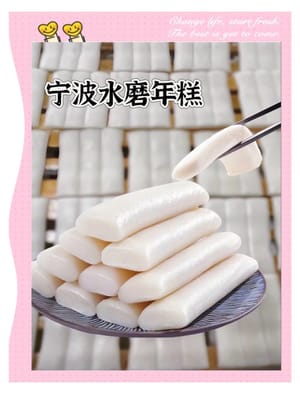
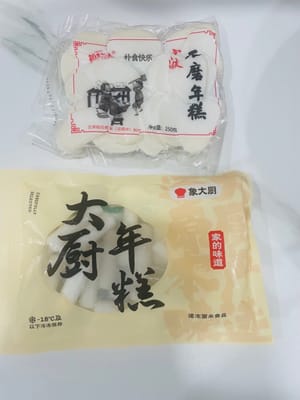
- 200g Sichuan and Chongqing bacon (If cooking is not available, you can use ham or eggs instead and ignore step 1)
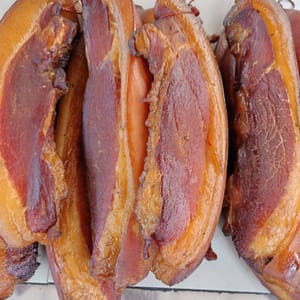
- bell peppers (a small piece of each color, for color matching)
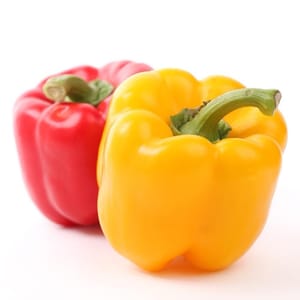
- 1 tsp salt
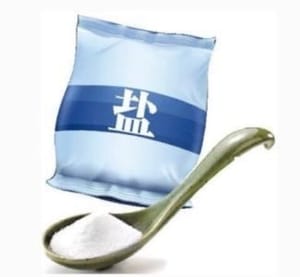
- 1 tsp chicken stock

- 2 cloves of garlic
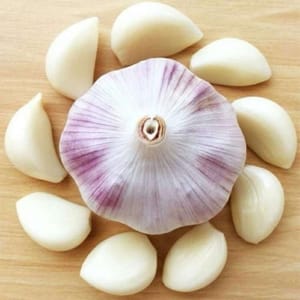
- 3 slices of ginger
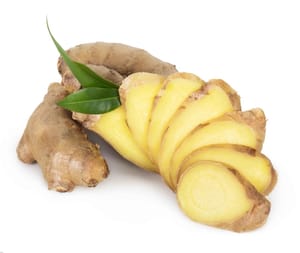
- 100g celery, omit if not available
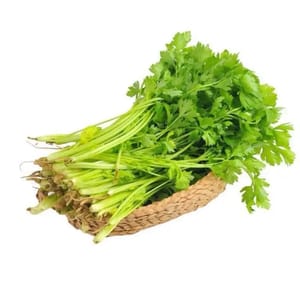
Steps
- Pre-cooking (for Sichuan and Chongqing bacon)
If you're not using bacon, you can substitute fried eggs or ham. Ignore this step.
~This step is about preparing pork and lamb with the skin on. It's recommended to sear the skin of all pork and lamb cuts (sealing the skin effectively removes the bacon's odor, firming the meat, improving the texture, and cleaning any impurities). After searing, soak the skin in warm water for about 20 minutes, then scrape and rinse thoroughly. Sichuan and Chongqing bacon should be boiled for 20 minutes to reduce the saltiness and cook until 80% done.
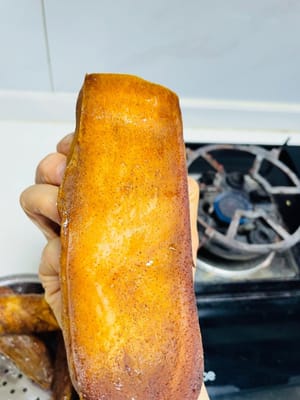
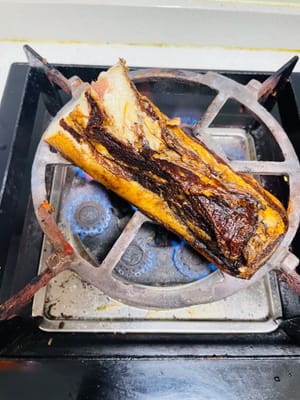
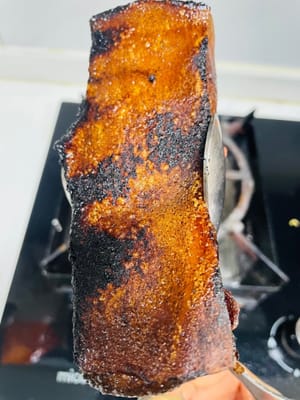
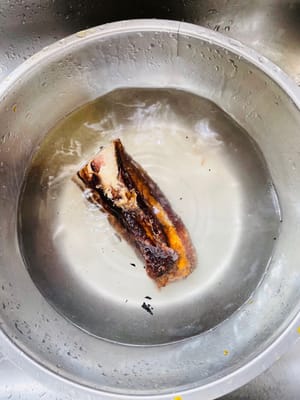
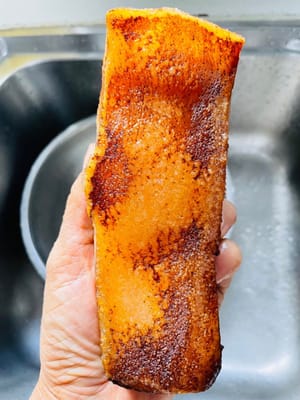
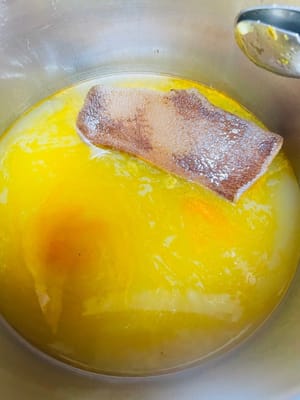
- Soak the rice cake in water for 30 minutes to soften it for frying.

- Cut the celery into sections, the bell pepper into small dices, the ginger into slices, and the garlic into flat pieces.
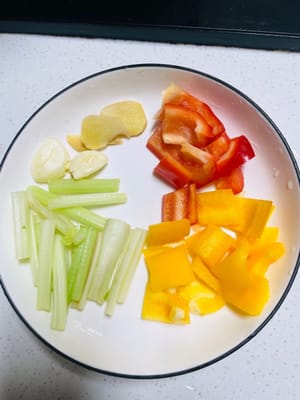
- Slice the prepared bacon (if using an alternative, cut the fried eggs into small pieces and the ham into strips; the picture shows the previous recipe). Heat the pan, add the bacon (or alternative), and stir-fry over medium-low heat until the fat is released.
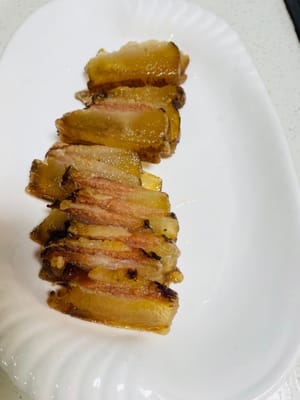
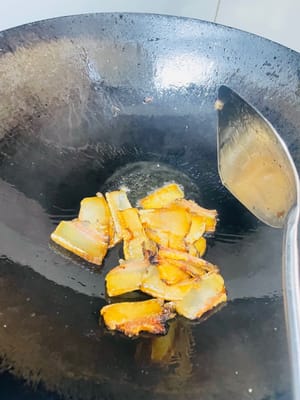
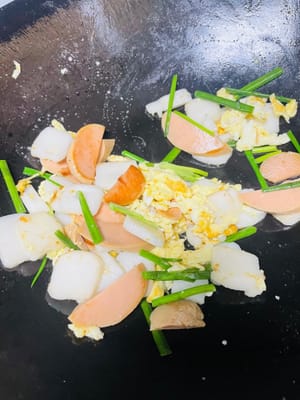
- Add garlic, ginger, celery (skip if not needed), soaked rice cake, and bell peppers. Stir-fry over medium-low heat for 3-4 minutes. Because bacon is naturally salty, use only 1 teaspoon of salt. Season with 1 teaspoon of chicken bouillon.
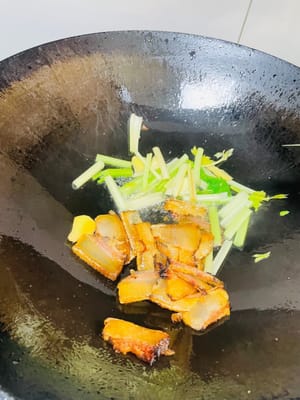
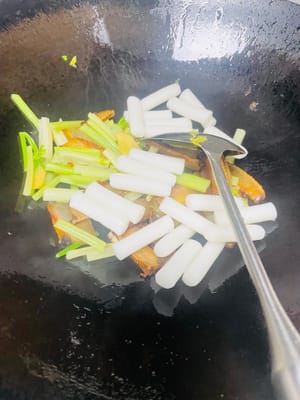
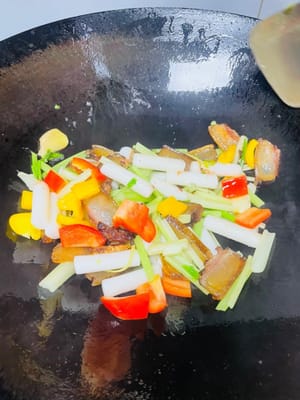
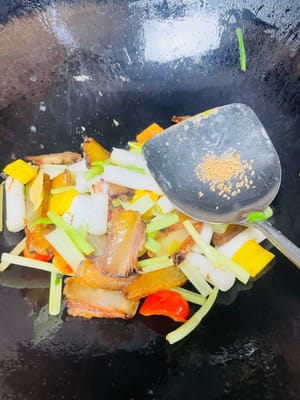
- Stir-fry evenly and serve. This is a simple and delicious rice cake.
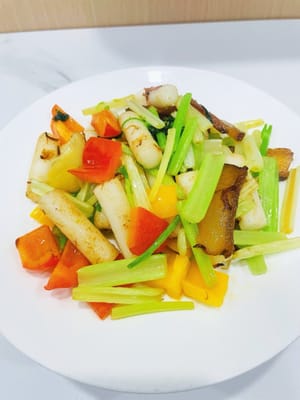
- Rice cake hot pot is also a must-try for Sichuan and Chongqing hot pot.
If you're enjoying hot pot, you absolutely must have the hot pot sauce; it's the heart of the dish, and it tastes just as good as eating it at a restaurant.
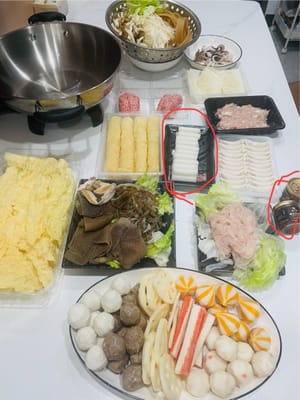
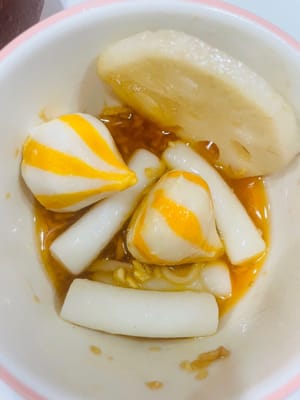
Languages
Hausgemachter gebratener, federnder Reiskuchen - Deutsch (German) versionHomemade Stir-fried Springy Rice Cake - English version
Pastel de arroz elástico salteado casero - Española (Spanish) version
Gâteau de riz élastique sauté maison - Français (French) version
Kue Beras Kenyal Tumis Buatan Sendiri - Bahasa Indonesia (Indonesian) version
Torta di riso elastica saltata in padella fatta in casa - Italiana (Italian) version
自家製もちもちの餅炒め - 日本語 (Japanese) version
집에서 만든 쫄깃한 떡볶이 - 한국인 (Korean) version
ข้าวผัดแหนมเนืองโฮมเมด - แบบไทย (Thai) version
家常百變炒Q彈年糕 - 香港繁體中文 (Traditional Chinese - Hong Kong) version